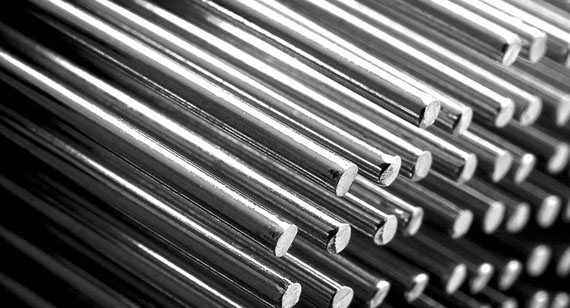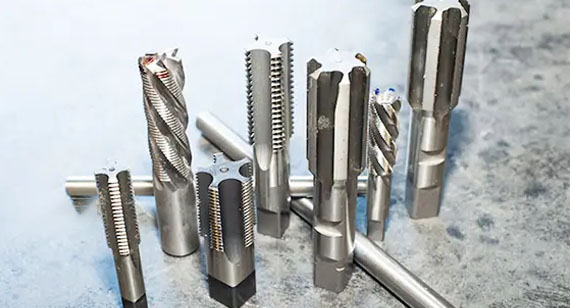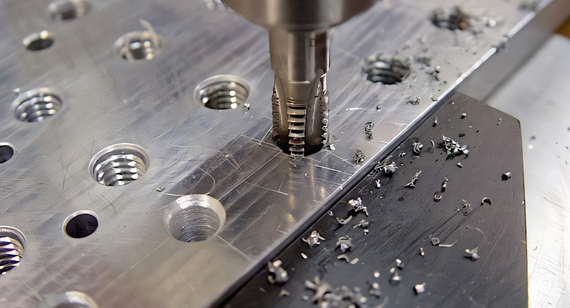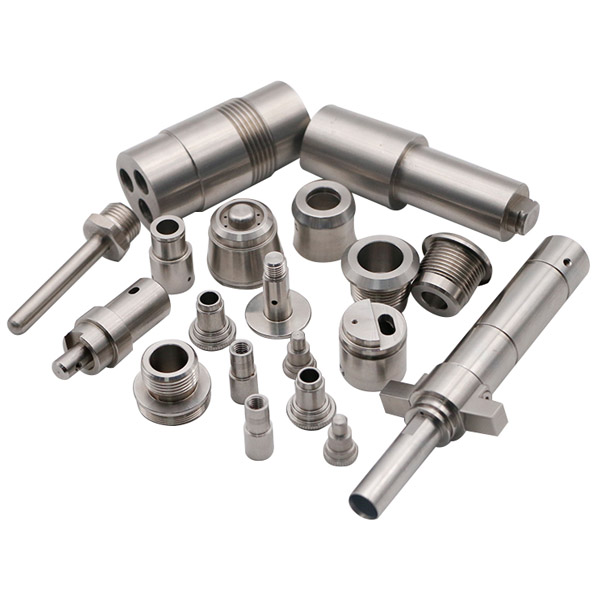15 years one-stop China custom CNC machining parts factory
 616 |
Published by VMT at Oct 14 2024
616 |
Published by VMT at Oct 14 2024
In the field of CNC machining, tool steel is a key material for producing high-performance tools, dies, and components. Known for its hardness, durability, and ability to withstand extreme temperatures and wear, tool steel is widely used in industries that demand precision and toughness. Whether you're working on CNC prototype machining or large-scale manufacturing, selecting the right tool steel grade is critical to ensuring that your project meets performance and durability requirements.
This article will explore the characteristics of tool steel, its classification, and essential guidelines for selecting the right grade for CNC machined parts. By understanding the properties and applications of different types of tool steels, you can make informed decisions that optimize both the machining process and the performance of your finished products.
Tool steel is a type of carbon and alloy steel that is specifically designed to be made into tools and dies. Its key attributes include high hardness, abrasion resistance, and the ability to retain its shape and edge under extreme conditions. Tool steel is used in applications where cutting, drilling, shaping, or forming metal or other materials is required.
The high carbon content in tool steel, combined with alloying elements like chromium, vanadium, molybdenum, and tungsten, enhances its toughness and resistance to deformation and wear. Tool steel is heat-treatable, which allows for further improvement of these properties depending on the specific application.
In custom CNC machining, tool steel is favored for producing parts that need to withstand significant wear and tear, such as cutting tools, dies, punches, and molds.

The production of tool steel involves careful control of the alloying elements and heat treatment processes to achieve the desired mechanical properties. Some of the key manufacturing methods include:
Casting: Initially, tool steel is melted and cast into large blocks or billets, which are then forged or rolled into usable shapes.
Forging: Tool steel is typically forged to refine its grain structure, improving its strength and toughness. This process involves heating the steel and shaping it under pressure.
Heat Treatment: The steel undergoes a heat treatment process, including hardening and tempering, to achieve the required hardness and toughness. Different grades of tool steel may require specific heat treatment techniques.
Other Common Steps in Manufacturing Tool Steel Include:
Annealing
Annealing is a process that involves heating the tool steel to a high temperature and then allowing it to cool slowly. This step relieves internal stresses, softens the steel, and makes it more machinable, which is important for subsequent manufacturing steps like cutting, grinding, or forming.
Hot or Cold Drawing
Hot drawing is a process where steel is heated and then pulled through dies to reduce its cross-sectional area, while cold drawing involves the same process at room temperature. Cold drawing typically results in better surface finish and tighter dimensional accuracy, but it can also increase hardness.
Tool steel is used in a wide variety of industries, thanks to its exceptional hardness, wear resistance, and toughness. Common applications include cutting tools (such as drills, milling cutters, and reamers), molds for plastic injection, dies for stamping and forming, and parts for machinery that require high wear resistance.
In CNC machining services, tool steel is often used to produce dies, punches, and cutting tools that shape or machine other metals. Its ability to withstand high-temperature environments and resist wear makes it indispensable in manufacturing.

Tool steel stands out from other types of steel due to its unique characteristics:
Hardness: Tool steel can be hardened to very high levels, which allows it to retain sharp cutting edges even after extended use.
Wear Resistance: The presence of alloying elements such as vanadium and chromium increases the wear resistance of tool steel, making it ideal for high-stress applications.
Toughness: Despite its hardness, tool steel can also be designed to have high toughness, meaning it can absorb impact without cracking or breaking.
Heat Resistance: Many grades of tool steel can withstand high temperatures, making them suitable for use in hot working applications.
These characteristics make tool steel ideal for applications that require durability, precision, and resistance to deformation under load.
Tool steel is classified into various types based on its properties and intended applications. The most common classifications are water-quenched, air-hardening, oil-hardening, hot work, and high-speed tool steels. Each category offers different properties that make them suitable for specific machining processes.
Table 1: Tool Steel Names
| Symbol |
Classification |
Characteristics |
| W | Water-quenched tool steel | High hardness, low heat resistance |
| S | Impact-resistant tool steel | Toughness, good wear resistance |
| P | Die steel | Good for plastic molding |
| D | High carbon chromium tool steel | Excellent wear resistance, tough |
| A | Air-hardening tool steel | Moderate wear resistance, good toughness |
| O | Oil-hardening tool steel | High hardness, good dimensional stability |
| H | Hot work tool steel | Excellent heat resistance and toughness |
| T & M | High-speed tool steel | Exceptional cutting performance at high speeds |
1. Water-Quenched Tool Steel (Symbol W)
Water-quenched tool steels are known for their high hardness and relatively low cost. These steels are hardened by rapid cooling in water after being heated. However, they have lower resistance to high temperatures, making them less suitable for hot work applications. W-series steels are used in tools like chisels and hammers, where high impact resistance is required.
2. Impact-Resistant Tool Steel (Symbol S)
Impact-resistant tool steels are designed to withstand heavy impacts without fracturing. These steels have a balance of hardness and toughness, making them ideal for tools that endure significant shock loads, such as punches and shear blades.
3. Die Steel (Symbol P)
Die steels are specialized for molding applications, particularly in the production of plastic parts. These steels are designed for excellent machinability, toughness, and wear resistance. P-series tool steels are used to make molds for plastic injection and die-casting applications.
4. Cold Work Tool Steel
Cold work tool steels are used in applications where the working temperature is relatively low. They are classified into three main subcategories based on their hardening process:
High Carbon Chromium or D Series Tool Steel
The D-series tool steels offer excellent wear resistance and dimensional stability, making them ideal for dies, punches, and cold forming tools.
Air Hardening or A Series Tool Steel
A-series tool steels harden in the air after being heated, providing a good balance of wear resistance and toughness.
Oil Hardening or O Series Tool Steel
O-series tool steels are hardened by oil quenching and are known for their dimensional stability and machinability, making them suitable for fine precision work.
5. Hot Work Tool Steel (Symbol H)
Hot work tool steels are designed to withstand high temperatures, making them ideal for applications such as forging, extrusion, and die-casting. These steels are further classified into different subtypes based on their alloying elements:
Molybdenum Tool Steel
Molybdenum tool steels offer excellent high-temperature strength and toughness, making them suitable for hot forming tools.
Tungsten Tool Steel
Tungsten tool steels are known for their superior resistance to wear and high-temperature hardness. They are commonly used in hot rolling and hot forging applications.
Chromium Tool Steel
Chromium tool steels offer good wear resistance and toughness, making them ideal for heavy-duty hot working tools.
6. High-Speed Tool Steel
High-speed tool steels are designed for cutting tools that operate at high speeds, such as drills, milling cutters, and lathe tools. They retain their hardness even at elevated temperatures, making them ideal for high-performance cutting operations.

7. Special Tool Steel
Special tool steels are developed for unique applications that require specific properties, such as extreme wear resistance, corrosion resistance, or enhanced toughness.
Selecting the right tool steel grade for your application involves several factors, including the specific requirements of the part being machined, the type of tooling used, and the operating conditions.

Tool Steel Characteristics
Different tool steel grades offer various combinations of hardness, toughness, and wear resistance. For high-wear applications, such as cutting or forming tools, a steel grade with high hardness and wear resistance should be selected. For tools that must absorb shock, impact-resistant steels with high toughness are ideal.
Speed Grades
High-speed tool steels are preferred for machining operations that require tools to maintain their hardness at high temperatures. These steels are ideal for cutting tools in CNC machining services that operate at elevated speeds.
Tool Steel Cost
Tool steels with higher alloying elements (such as tungsten or vanadium) tend to be more expensive but offer superior performance in demanding applications. Balancing performance with cost is essential when selecting the right grade.
Tool steel and stainless steel are often compared due to their widespread use in manufacturing, but they differ in terms of composition, properties, and applications.

Tool Steel vs. Stainless Steel: Characteristics
Tool steel is optimized for hardness, wear resistance, and toughness, making it ideal for machining tools and dies.
Stainless steel is known for its corrosion resistance, due to the presence of chromium, and is often used in applications requiring protection from rust and oxidation.
Tool Steel vs. Stainless Steel: Applications
Tool steel is typically used for manufacturing tools, dies, and machine parts that require high wear resistance, while stainless steel is used in applications such as food processing, medical devices, and architecture, where corrosion resistance is critical.
At VMT, we offer a range of custom CNC machining services to meet your specific needs. We specialize in working with tool steel to produce high-quality, precision parts for industries including automotive, aerospace, and industrial tooling. Whether you need CNC machined parts made from water-quenched tool steel or high-speed tool steel, we can provide the expertise and equipment to ensure the highest quality.

Conclusion
Tool steel is a versatile material with many grades and applications, each offering unique characteristics such as hardness, toughness, and wear resistance. Understanding the different types of tool steels and how to select the right grade is essential for optimizing your CNC machining operations. Whether you're working with cold work tool steels, high-speed tool steels, or hot work tool steels, selecting the right grade ensures that your tools and components perform reliably and last longer.
By partnering with a professional CNC machining factory like VMT, you can ensure that your tool steel parts are produced to the highest standards of quality and precision.
Why do tool steels fail?
Tool steels can fail due to improper heat treatment, excessive wear, or impact stress. Correct selection and treatment of the steel grade can prevent failure.
What makes tool steel ideal for machining?
Tool steel is ideal for machining because of its ability to retain hardness and sharpness under high-stress conditions, making it perfect for cutting and forming tools.
Can you mill tool steel?
Yes, tool steel can be milled, but it requires specialized cutting tools (usually carbide or high-speed steel) due to its hardness.
What is the hardest tool steel?
D2 tool steel, a high carbon, high chromium steel, is one of the hardest tool steels, offering excellent wear resistance.
Is 4140 steel a tool steel?
4140 steel is not classified as a tool steel but rather as an alloy steel. It is commonly used for components requiring high strength and toughness.
Is tool steel stronger than regular steel?
Yes, tool steel is generally stronger and more wear-resistant than regular carbon steel due to its higher alloy content and heat treatment.
Which is stronger, 4130 steel or 4140 steel?
4140 steel is typically stronger and has better wear resistance than 4130 steel due to its higher carbon content and heat-treatable properties.
What is the difference between 1018 steel and 4140 steel?
1018 steel is a low-carbon mild steel, whereas 4140 steel is an alloy steel with higher carbon content and chromium, making it stronger and more wear-resistant.
What to weld tool steel with?
Tool steels can be welded with high-strength filler materials, often using pre-heating and post-heating treatments to avoid cracking.
Why is tool steel so hard?
Tool steel is hard because of its high carbon content and alloying elements like chromium, vanadium, and tungsten, which improve its wear resistance and hardness during heat treatment.
